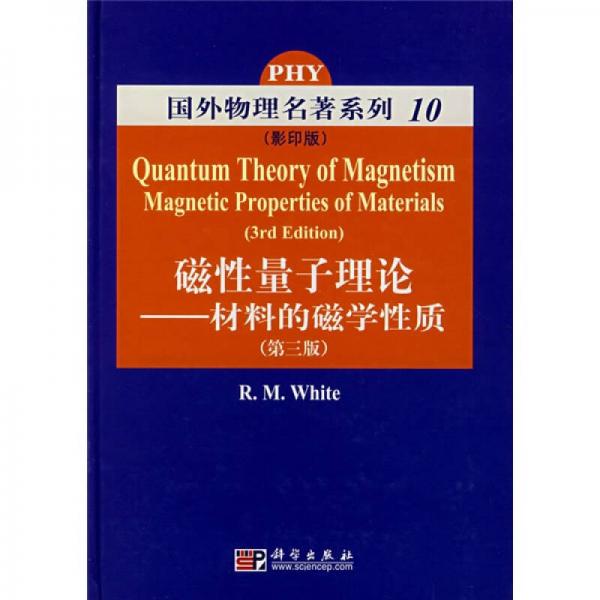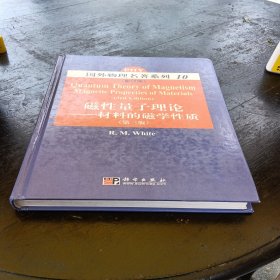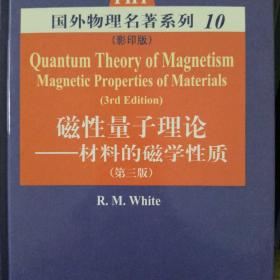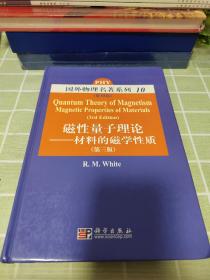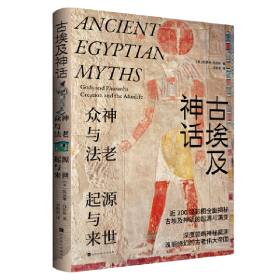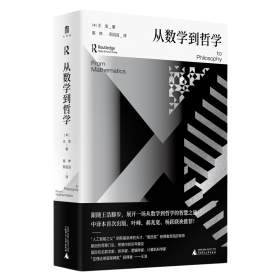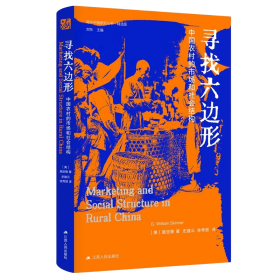国外物理名著系列10`磁性量子理论:材料的磁学性质(第3版)(影印版)
作者:
[英] 怀特
(White R.M.) 编
出版时间:
2008-02
版次:
1
ISBN:
9787030209382
定价:
68.00
装帧:
精装
开本:
16开
纸张:
胶版纸
页数:
359页
字数:
440千字
正文语种:
英语
-
《磁性量子理论:材料的磁学性质(第3版)(影印版)》从“线性响应”出发研究磁学现象。主要内容是研究磁性材料在磁场作用下是如何响应的(磁场可以是均匀的或不均匀的,静止的或变化的)。《磁性量子理论:材料的磁学性质(第3版)(影印版)》的前两版主要研究了磁性响应,本版中还增加了磁性材料的磁阻抗,同时在每章后还增加了一些习题以帮助读者加深对内容的理解。
《磁性量子理论:材料的磁学性质(第3版)(影印版)》关于磁学基本原理的论述和前两版相比变化不大。随着研究的深入和新应用的发展,新的磁学现象不断涌现,如《磁性量子理论:材料的磁学性质(第3版)(影印版)》第二版出版以来,发现了巨磁阻效应,自旋电子学的研究队伍也在迅速扩大。《磁性量子理论:材料的磁学性质(第3版)(影印版)》不仅介绍了这些新现象,而且详细讨论了新材料(如高温超导材料)的一个重要性质——磁性。我们通过测量磁化率,核磁共振,中子散射等手段来研究材料的磁性,这为新材料的研究提供了便利。
根据最近的研究成果,《磁性量子理论:材料的磁学性质(第3版)(影印版)》对一些资料作了重要的修正,也新加入了一些资料(新加入了有关磁性多层薄膜的一章)。《磁性量子理论:材料的磁学性质(第3版)(影印版)》紧跟学科发展,是一本介绍新材料科学关键性能——磁性的经典著作。 1 TheMagneticSusceptibility
1.1 TheMagneticMoment
1.2 TheMagnetization
1.3 TheGeneralizedSusceptibility
1.3.1 TheKramers-KronigRelations
1.3.2 TheFluctuation-DissipationTheorem..
1.3.3 OnsagerRelation
1.4 SecondQuantization
1.4.1 Example:TheDegenerate-ElectronGas
1.4.2 Example:TheZeemanInteraction
2 TheMagneticHamiltonian
2.1 TheDiracEquation
2.2 SourcesofFields
2.2.1 UniformExternalField
2.2.2 TheElectricQuadrupoleField
2.2.3 TheMagneticDipole(Hyperfine)Field.
2.2.4 OtherElectronsontheSameIon
2.2.5 CrystallineElectricFields
2.2.6 Dipole-DipoleInteraction
2.2.7 DirectExchange
2.2.8 Superexchange
2.2.9 MolecularMagnets
2.2.10 DoubleExchange
2.2.11 ExchangeonaSurface
2.3 TheSpinHamiltonian
2.3.1 Transition-MetalIons
2.3.2 Rare-EarthIons
2.3.3 Semiconductors
3 TheStaticSusceptibilityofNoninteractingSystems
3.1 LocalizedMoments
3.1.1 Diamagnetism
3.1.2 ParamagnetismofTransition-MetalIons
3.1.3 ParamagnetismofRare-EarthIons
3.2 Metals
3.2.1 LandauDiamagnetism
3.2.2 ThedeHaas-vanAlphenEffect
3.2.3 QuantizedHallConductance
3.2.4 PauliParamagnetism
3.3 MeasurementoftheSusceptibility
3.4 LocalMomentsinMetals
3.4.1 VirtualBoundStates
3.4.2 AndersonsTheoryofMomentFormation
3.4.3 TheKondoEffect
4 TheStaticSusceptibilityofInteractingSystems:LocalMoments
4.1 HighTemperatures
4.2 LowTemperatures
4.3 TemperaturesNearTc
4.4 LandauTheoryofSecond-OrderTransitions
4.5 CriticalPhenomena
4.5.1 Orderin2D
4.6 Stoner-WohlfarthModel
4.7 DynamicCoercivity
4.8 MagneticViscosity
5 TheStaticSusceptibilityofInteractingSystems:Metals.
5.1 FermiLiquidTheory
5.2 HeavyFermionSystems
5.3 ItinerantMagnetism
5.3.1 TheStonerModel
5.3.2 TheHubbardModel
6 TheDynamicSusceptibilityofWeaklyInteractingSystems:LocalMoments
6.1 EquationofMotion
6.2 TheBlochEquations
6.3 ResonanceLineShape
6.3.1 TheMethodofMoments
6.3.2 TheRelaxation-FunctionMethod
6.3.3 SpinDiffusion
6.4 SpinEchoes
6.4.1 MeasurementofT1
6.4.2 CalculationofT1
7 TheDynamicSusceptibilityofWeaklyInteractingSystems:Metals
7.1 Paramagnons
7.2 FermiLiquidTheory
7.3 Conduction-ElectronSpinResonance
7.4 SpinWaves
7.5 LocalMomentsinMetals
7.6 FaradayEffect
8 TheDynamicSusceptibilityofStronglyInteractingSystems
8.1 BrokenSymmetry
8.2 Insulators
8.2.1 Spin-WaveTheory
8.2.2 CoherentMagnonState
8.2.3 MagnetostaticModes
8.2.4 Solitons
8.2.5 ThermalMagnonEffects
8.2.6 NonlinearProcesses
8.2.7 Chaos
8.2.8 OpticalProcesses
8.3 HighTemperatures
8.4 Micromagnetics
8.4.1 MagneticForceMicroscope
8.4.2 PhenomenologicalDamping
8.5 Metals
9 ThinFilmSystems
9.1 Interfaces
9.1.1 ExchangeBias
9.1.2 BiquadraticExchange
9.2 Trilayers
9.2.1 TheRKKYIneraction
9.2.2 QuantumWellModel
9.2.3 GiantMagnetoresistance(GMR)
9.2.4 Tunneling
9.2.5 SpinTransfer
9.2.6 SpinHallEffect
10 NeutronScattering
10.1 NeutronScatteringCrossSection
10.2 NuclearScattering
10.2.1 BraggScattering
10.2.2 ScatteringofPhonons
10.3 MagneticScattering
10.3.1 BraggScattering
10.3.2 SpinDynamics
10.4 Example:ManganeseOxides
10.5 Example:QuantumPhaseTransitions
References
Index
-
内容简介:
《磁性量子理论:材料的磁学性质(第3版)(影印版)》从“线性响应”出发研究磁学现象。主要内容是研究磁性材料在磁场作用下是如何响应的(磁场可以是均匀的或不均匀的,静止的或变化的)。《磁性量子理论:材料的磁学性质(第3版)(影印版)》的前两版主要研究了磁性响应,本版中还增加了磁性材料的磁阻抗,同时在每章后还增加了一些习题以帮助读者加深对内容的理解。
《磁性量子理论:材料的磁学性质(第3版)(影印版)》关于磁学基本原理的论述和前两版相比变化不大。随着研究的深入和新应用的发展,新的磁学现象不断涌现,如《磁性量子理论:材料的磁学性质(第3版)(影印版)》第二版出版以来,发现了巨磁阻效应,自旋电子学的研究队伍也在迅速扩大。《磁性量子理论:材料的磁学性质(第3版)(影印版)》不仅介绍了这些新现象,而且详细讨论了新材料(如高温超导材料)的一个重要性质——磁性。我们通过测量磁化率,核磁共振,中子散射等手段来研究材料的磁性,这为新材料的研究提供了便利。
根据最近的研究成果,《磁性量子理论:材料的磁学性质(第3版)(影印版)》对一些资料作了重要的修正,也新加入了一些资料(新加入了有关磁性多层薄膜的一章)。《磁性量子理论:材料的磁学性质(第3版)(影印版)》紧跟学科发展,是一本介绍新材料科学关键性能——磁性的经典著作。
-
目录:
1 TheMagneticSusceptibility
1.1 TheMagneticMoment
1.2 TheMagnetization
1.3 TheGeneralizedSusceptibility
1.3.1 TheKramers-KronigRelations
1.3.2 TheFluctuation-DissipationTheorem..
1.3.3 OnsagerRelation
1.4 SecondQuantization
1.4.1 Example:TheDegenerate-ElectronGas
1.4.2 Example:TheZeemanInteraction
2 TheMagneticHamiltonian
2.1 TheDiracEquation
2.2 SourcesofFields
2.2.1 UniformExternalField
2.2.2 TheElectricQuadrupoleField
2.2.3 TheMagneticDipole(Hyperfine)Field.
2.2.4 OtherElectronsontheSameIon
2.2.5 CrystallineElectricFields
2.2.6 Dipole-DipoleInteraction
2.2.7 DirectExchange
2.2.8 Superexchange
2.2.9 MolecularMagnets
2.2.10 DoubleExchange
2.2.11 ExchangeonaSurface
2.3 TheSpinHamiltonian
2.3.1 Transition-MetalIons
2.3.2 Rare-EarthIons
2.3.3 Semiconductors
3 TheStaticSusceptibilityofNoninteractingSystems
3.1 LocalizedMoments
3.1.1 Diamagnetism
3.1.2 ParamagnetismofTransition-MetalIons
3.1.3 ParamagnetismofRare-EarthIons
3.2 Metals
3.2.1 LandauDiamagnetism
3.2.2 ThedeHaas-vanAlphenEffect
3.2.3 QuantizedHallConductance
3.2.4 PauliParamagnetism
3.3 MeasurementoftheSusceptibility
3.4 LocalMomentsinMetals
3.4.1 VirtualBoundStates
3.4.2 AndersonsTheoryofMomentFormation
3.4.3 TheKondoEffect
4 TheStaticSusceptibilityofInteractingSystems:LocalMoments
4.1 HighTemperatures
4.2 LowTemperatures
4.3 TemperaturesNearTc
4.4 LandauTheoryofSecond-OrderTransitions
4.5 CriticalPhenomena
4.5.1 Orderin2D
4.6 Stoner-WohlfarthModel
4.7 DynamicCoercivity
4.8 MagneticViscosity
5 TheStaticSusceptibilityofInteractingSystems:Metals.
5.1 FermiLiquidTheory
5.2 HeavyFermionSystems
5.3 ItinerantMagnetism
5.3.1 TheStonerModel
5.3.2 TheHubbardModel
6 TheDynamicSusceptibilityofWeaklyInteractingSystems:LocalMoments
6.1 EquationofMotion
6.2 TheBlochEquations
6.3 ResonanceLineShape
6.3.1 TheMethodofMoments
6.3.2 TheRelaxation-FunctionMethod
6.3.3 SpinDiffusion
6.4 SpinEchoes
6.4.1 MeasurementofT1
6.4.2 CalculationofT1
7 TheDynamicSusceptibilityofWeaklyInteractingSystems:Metals
7.1 Paramagnons
7.2 FermiLiquidTheory
7.3 Conduction-ElectronSpinResonance
7.4 SpinWaves
7.5 LocalMomentsinMetals
7.6 FaradayEffect
8 TheDynamicSusceptibilityofStronglyInteractingSystems
8.1 BrokenSymmetry
8.2 Insulators
8.2.1 Spin-WaveTheory
8.2.2 CoherentMagnonState
8.2.3 MagnetostaticModes
8.2.4 Solitons
8.2.5 ThermalMagnonEffects
8.2.6 NonlinearProcesses
8.2.7 Chaos
8.2.8 OpticalProcesses
8.3 HighTemperatures
8.4 Micromagnetics
8.4.1 MagneticForceMicroscope
8.4.2 PhenomenologicalDamping
8.5 Metals
9 ThinFilmSystems
9.1 Interfaces
9.1.1 ExchangeBias
9.1.2 BiquadraticExchange
9.2 Trilayers
9.2.1 TheRKKYIneraction
9.2.2 QuantumWellModel
9.2.3 GiantMagnetoresistance(GMR)
9.2.4 Tunneling
9.2.5 SpinTransfer
9.2.6 SpinHallEffect
10 NeutronScattering
10.1 NeutronScatteringCrossSection
10.2 NuclearScattering
10.2.1 BraggScattering
10.2.2 ScatteringofPhonons
10.3 MagneticScattering
10.3.1 BraggScattering
10.3.2 SpinDynamics
10.4 Example:ManganeseOxides
10.5 Example:QuantumPhaseTransitions
References
Index
查看详情
-
八五品
江苏省南京市
平均发货18小时
成功完成率95.12%
-
九品
-
九五品
北京市顺义区
平均发货13小时
成功完成率88.46%
-
九五品
江苏省宿迁市
平均发货10小时
成功完成率90.03%
-
九五品
北京市房山区
平均发货9小时
成功完成率90.94%
-
九品
湖北省武汉市
平均发货10小时
成功完成率94.5%
-
九品
湖北省武汉市
平均发货10小时
成功完成率94.5%
-
八五品
黑龙江省哈尔滨市
平均发货5小时
成功完成率97.13%
-
九品
北京市东城区
平均发货25小时
成功完成率89.18%
-
九品
北京市昌平区
平均发货17小时
成功完成率100%
-
九品
北京市海淀区
平均发货24小时
成功完成率83.48%
-
九品
北京市海淀区
平均发货22小时
成功完成率90.09%
-
九五品
湖北省武汉市
平均发货16小时
成功完成率79.38%
-
2008-02 印刷
印次: 1
九五品
浙江省宁波市
平均发货14小时
成功完成率96.05%

 占位居中
占位居中

